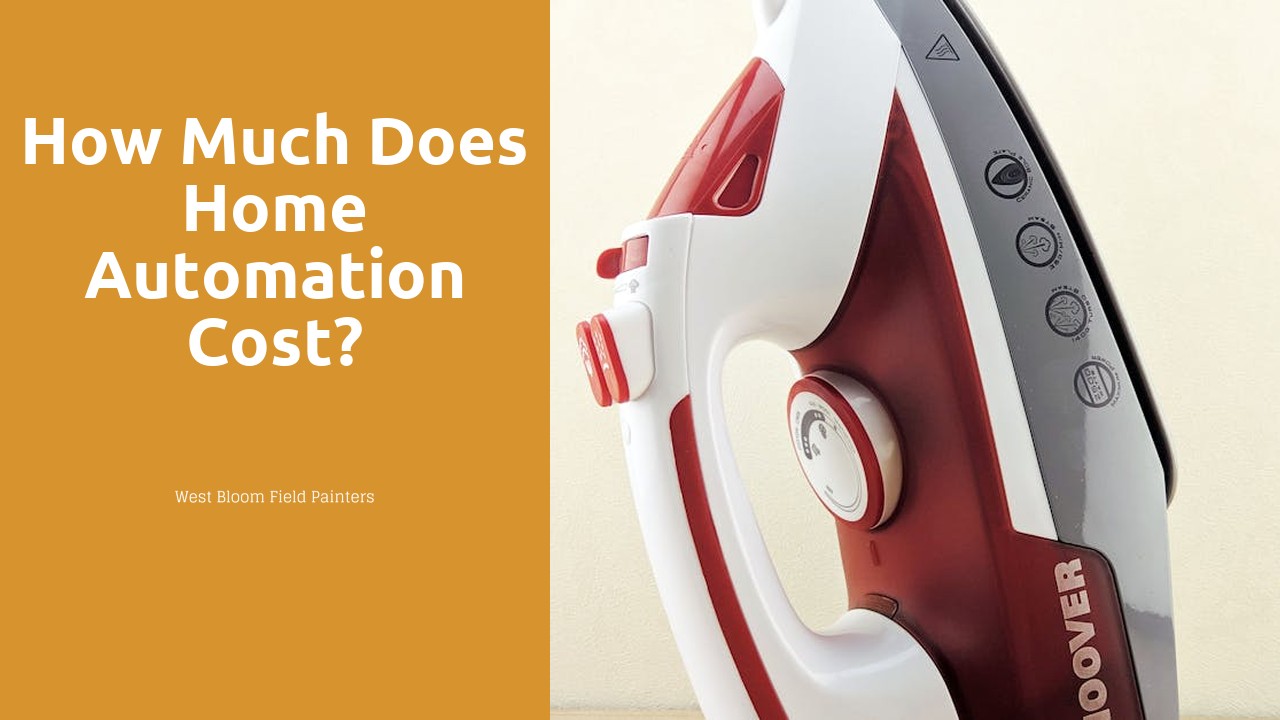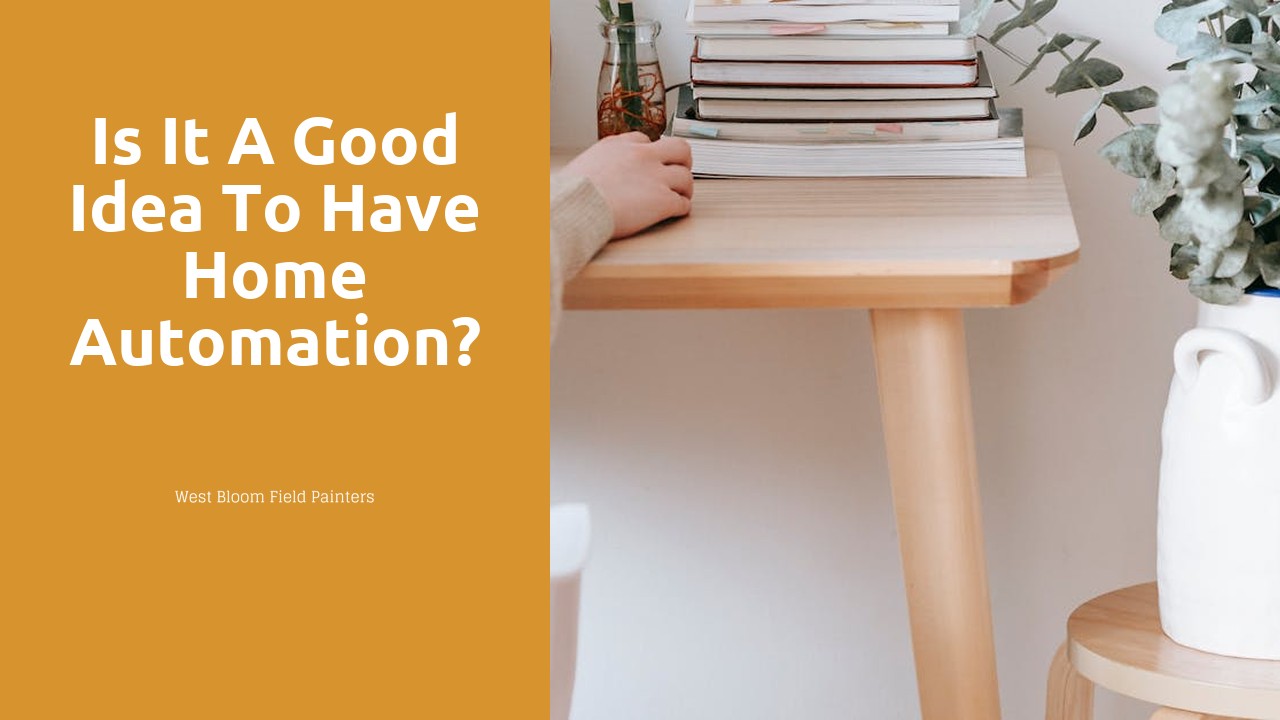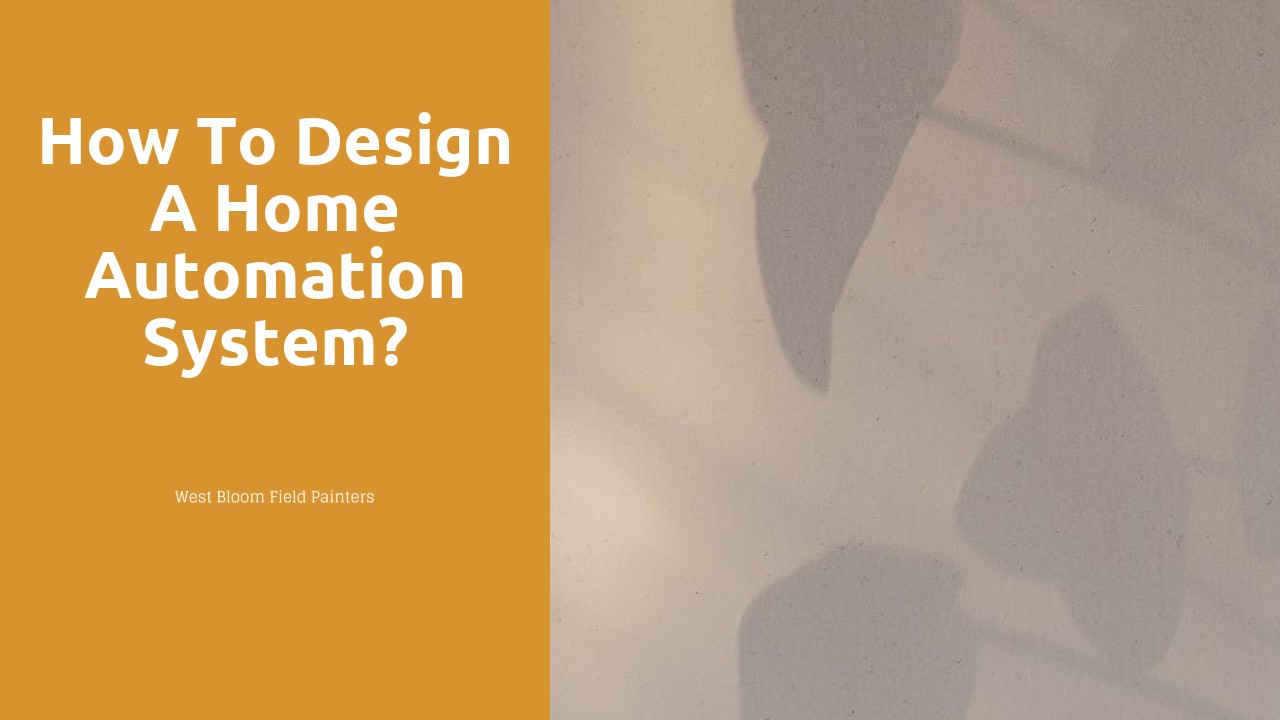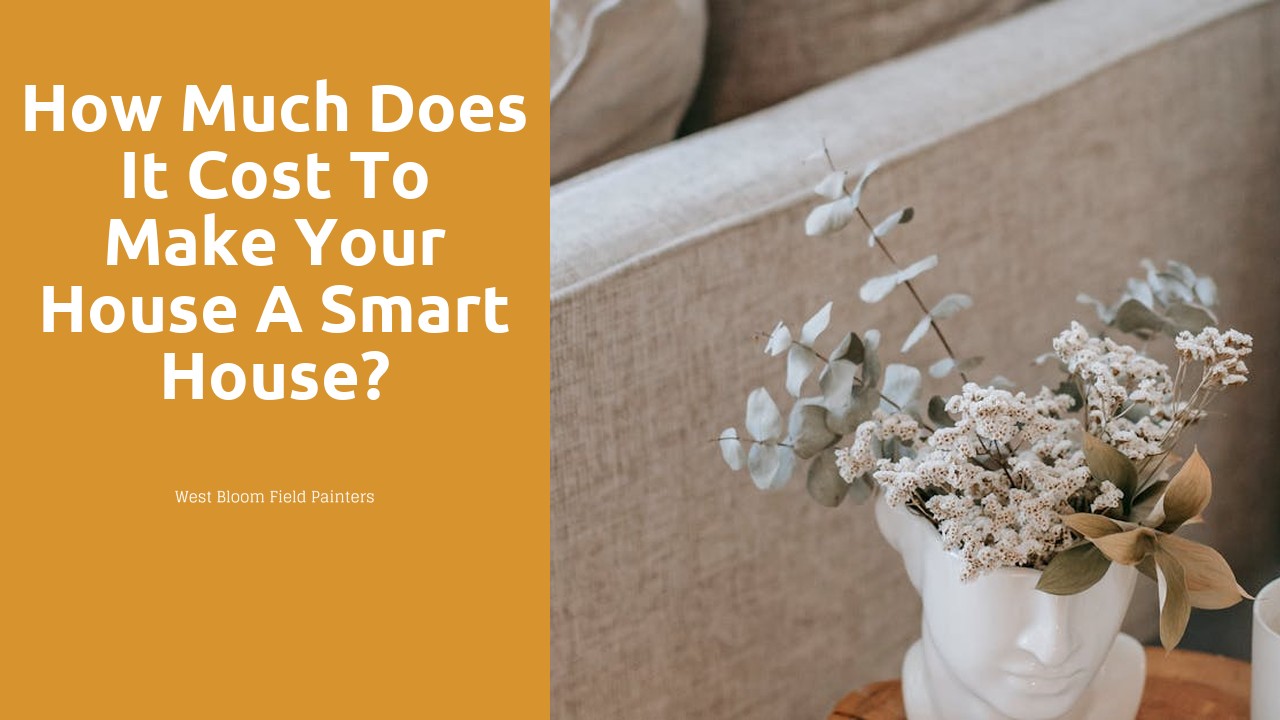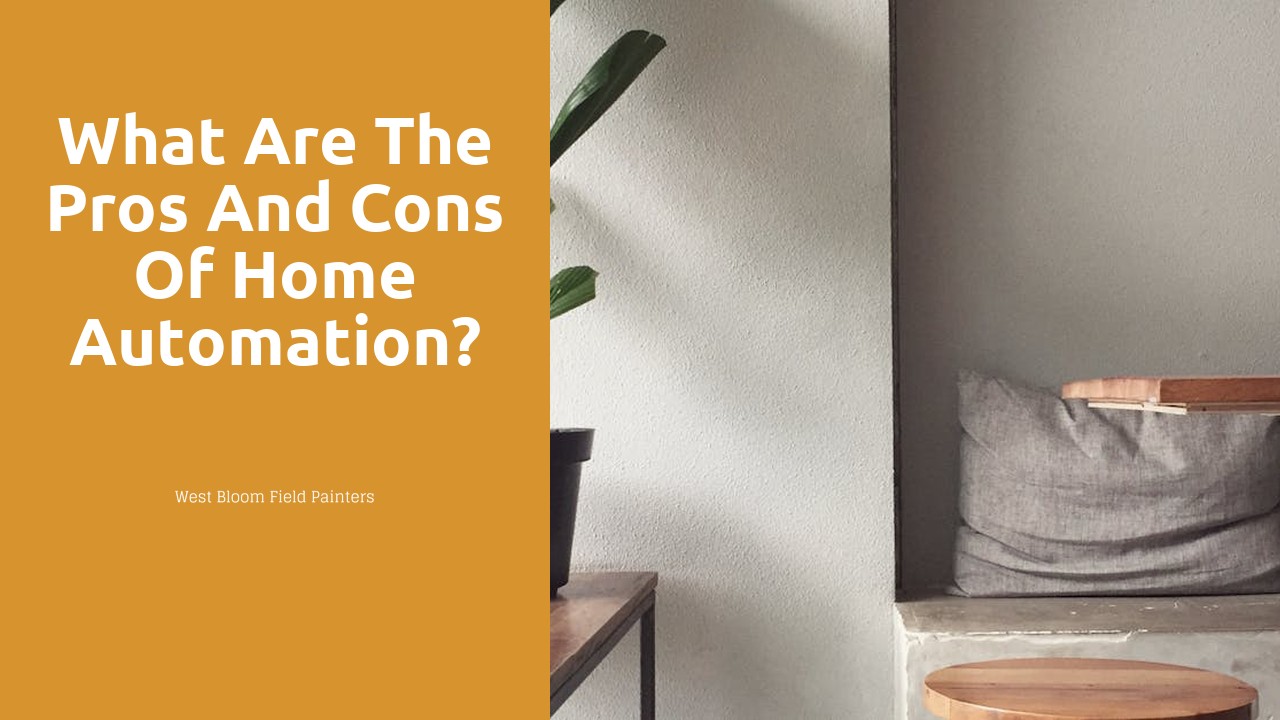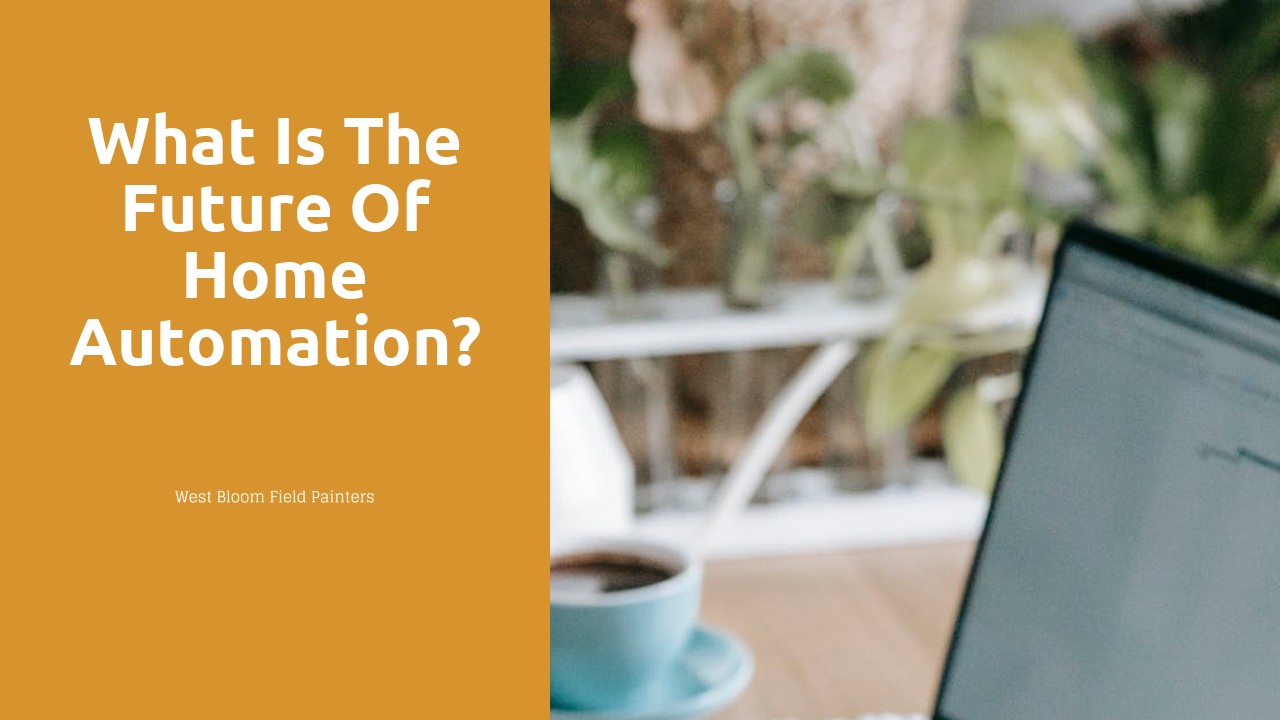
Home Automation Design
Table Of Contents
West Bloom Field Painters provides top-notch service in Home Automation Design for homeowners in the West Bloom Field area. Our skilled team of professionals will work closely with you to create a personalized automation system that meets your specific needs and desires. From installing smart home devices to setting up seamless automation for lighting, climate control, and security systems, we ensure that your home is equipped with the latest technology to simplify your daily life. With our expertise and attention to detail, you can trust West Bloom Field Painters to deliver a cutting-edge automation solution that enhances the functionality and convenience of your home.
Troubleshooting Common Issues
When setting up a home automation system, it's common to encounter various issues that can disrupt the seamless operation of your smart devices. One prevalent problem is connectivity issues, where devices may struggle to communicate with each other or with the central hub. In such cases, it's crucial to ensure that all devices are within the recommended range of the hub and that there are no physical barriers causing interference.
Another frequent issue is related to software updates and compatibility. Ensure that all devices are running on the latest firmware to prevent any glitches or malfunctions. If you notice that a particular device is not responding as expected, try restarting it or removing and re-adding it to the system. Sometimes a simple reboot can solve connectivity issues and restore the functionality of your smart home setup.
Addressing Connectivity Problems
For addressing connectivity problems in your smart home setup, ensuring a stable and reliable Wi-Fi connection is fundamental. Weak or interrupted Wi-Fi signals can disrupt the communication between your smart devices and the central hub, leading to malfunctions or delays in executing commands. To strengthen your Wi-Fi signal, consider strategic placement of your router in a central location, away from obstructions and interference from other electronic devices. Additionally, opting for a dual-band router can help reduce congestion on your network, especially in environments with numerous connected devices.
Moreover, conducting regular maintenance checks on your network and devices can help preempt connectivity issues. Ensuring that your smart home devices are running the latest firmware updates can enhance compatibility and performance. Similarly, monitoring the health of your Wi-Fi network through diagnostic tools can pinpoint areas of concern and allow for timely interventions to maintain a seamless smart home experience. By staying proactive in managing your network and devices, you can minimize the occurrence of connectivity problems and optimize the functionality of your home automation system.
Expanding Your Smart Home Ecosystem
Expanding your smart home ecosystem is an exciting venture that allows you to enhance the functionality of your home automation system. By integrating new smart devices and technologies, you can create a more seamless and interconnected living space. Whether you're looking to add smart lighting, thermostats, or security cameras, expanding your smart home ecosystem enables you to tailor your home automation system to better suit your needs and lifestyle.
One key aspect to consider when expanding your smart home ecosystem is ensuring that all your devices are compatible and can communicate effectively with each other. It's important to do thorough research on the various smart devices available on the market and choose ones that can easily integrate with your existing system. By selecting devices that work well together, you can streamline your smart home setup and enjoy a more cohesive user experience.
Connecting With ThirdParty Devices
When it comes to expanding your smart home ecosystem, connecting with third-party devices is a crucial step. Compatibility between different devices is essential for creating a seamless and integrated home automation experience. By ensuring that your smart devices can communicate effectively with each other, you can unlock new possibilities for automation and convenience in your daily life.
One of the key factors to consider when connecting third-party devices is compatibility. Make sure to check if the devices you are adding to your smart home ecosystem are compatible with the existing system. This will help prevent any issues with connectivity and ensure that all your devices work together harmoniously to create a truly smart and interconnected home.
Ensuring Data Privacy and Security
When it comes to home automation systems, ensuring data privacy and security should be a top priority for homeowners. Implementing strong passwords and encryption is essential to safeguarding personal information and preventing unauthorized access to smart devices. It is crucial to create complex passwords that include a combination of letters, numbers, and special characters to enhance security measures.
Moreover, regularly updating passwords and keeping software up-to-date can help mitigate potential risks associated with cyber threats. Homeowners should also be cautious when granting permissions to third-party apps and services, ensuring that only reputable and trustworthy sources have access to their home automation system. By being proactive and diligent in maintaining data privacy and security measures, individuals can enjoy the convenience of smart home technology with peace of mind.
Implementing Strong Passwords and Encryption
When it comes to guaranteeing the security of your smart home devices, implementing strong passwords and encryption protocols is essential. Weak passwords can leave your system vulnerable to cyber threats and privacy breaches. To enhance your home automation system's defense against potential attacks, opt for complex passwords that blend uppercase and lowercase letters, numbers, and special characters.
Moreover, encryption acts as a shield that safeguards your data from unauthorized access. By encrypting your network communications, you add an extra layer of protection, ensuring that only authorized users can interpret the information being transmitted. Utilizing encryption protocols like WPA3 for Wi-Fi networks can significantly reduce the risk of intrusions and data interceptions. Remember, a secure password and robust encryption are your first line of defense in maintaining the privacy and security of your smart home technology.
FAQS
What are some common issues that can arise in home automation systems?
Common issues in home automation systems can include connectivity problems, device compatibility issues, software glitches, and power failures.
How can I address connectivity problems in my home automation system?
To address connectivity problems, you can try rebooting your devices, checking your Wi-Fi network strength, moving devices closer to the router, or using a Wi-Fi extender to improve signal coverage.
How can I expand my smart home ecosystem with additional devices?
You can expand your smart home ecosystem by adding compatible devices from the same brand or system, integrating third-party devices using protocols like Zigbee or Z-Wave, or investing in a smart home hub to control multiple devices.
How can I connect my home automation system with third-party devices?
To connect your home automation system with third-party devices, you can look for products that support common protocols like IFTTT, Zigbee, Z-Wave, or Apple HomeKit, and use compatible apps or hubs to create a seamless integration.
What steps should I take to ensure data privacy and security in my home automation system?
To ensure data privacy and security in your home automation system, you should implement strong passwords for all devices and accounts, enable encryption for data transmission, regularly update firmware and software, and consider using a virtual private network (VPN) for remote access.
